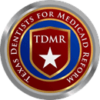During a game of Red Rover when she was 16 years old, Rochelle “Roz” Siuvuq Ferry lost a front tooth.
Ferry, who is Inupiaq, remembers having to get on a plane to get from her remote Alaskan village to the city of Nome to start the tooth replacement process.
Traveling to Nome for dental care is what everyone in her community had to do — even for a toothache or a basic cleaning. There was no such service where they lived.
Ferry knew many members of her community whose teeth decayed so badly, they needed extraction — simply because they didn’t have access to care.
Her tooth mishap 28 years ago and her awareness of neighbors’ struggles led Ferry to become a dental therapist.
Dental therapists are licensed to fill cavities, place temporary crowns, extract diseased teeth and provide other basic preventive dental care, working under a dentist’s supervision. They have more training than a hygienist but not the advanced degree of a dentist.
More than a dozen states have authorized the licensing and practice of dental therapists, and the occupation is growing. Critics of dental therapy say state and federal policy should instead focus on supporting dentists. But many experts say dental therapists can help provide better access to oral health care for underserved communities — including in rural areas and for adults and children who lack insurance coverage or who are on public insurance.
Source: Dental therapists, who can fill cavities and check teeth, get the OK in more states / Stateline


Dental therapists, in dentist led teams, have been shown to be safe, competent and effective, in helping expand access to care, for more than a century. Ditto for the past 20 years in Alaska and almost 10 in Minnesota.
Still, “Only A Dentist” remains policy within ADA and AGD. Anyone ever read “The Dental Workforce Tool Kit?”
Why is it $60 million, in ACA funding, for dental workforce research was embargoed and remains untouched? Is such research taboo in The USA? Why?
Access is not a new problem, however it is ever growing. Does it make sense to think that a 20th century dental delivery model, one based upon “Only A Dentist,” is the only way to deal with a 21st century problem?
I am confident that dentist supervised dental care teams can effectively be based upon DAs, RDHs and DTs, placed in school based, community health centers and work sites. They could even be in pediatric medical practices, where the earliest prevention and interceptive treatment can be provided. It does not require a $600-800,000 dental school graduate. Not for what delegation can accomplish equally.
I love the people I serve but the insurance company situation makes it hard for us to serve our patients properly.
Today most practitioners are forced to cut corners to be able to keep the overhead low enough to keep the office doors open.